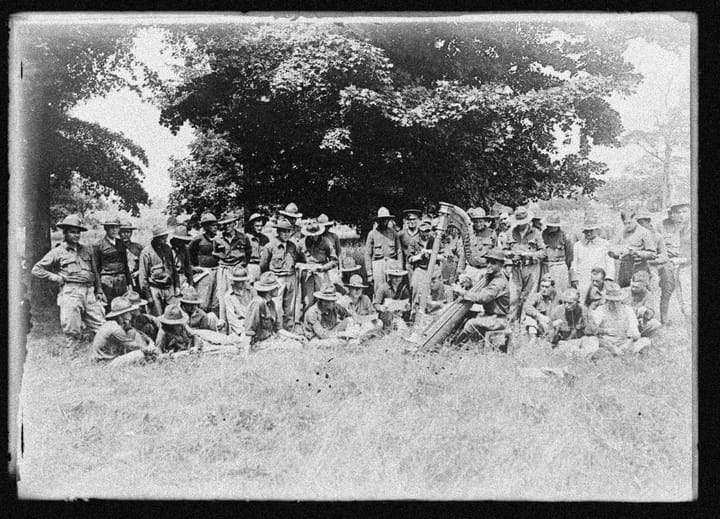The Psychoeducational Middle School
The introduction of a therapeutic element in the absence of any explicit acknowledgment of the social and material context in which tensions arise intensifies repression rather than relieving it.

“The old competition is dead, even if the old liberal alibis for it are now incarnate as fetishes. But new kinds of competition, making new kinds of people, have arisen.”
C. Wright Mills, The Competitive Personality
Students at the Psychoeducational Middle School wake before dawn to beat the 7:15am bell, and stay late into the evening for tutoring or enrichment activities. For most, the midtown Manhattan school lies at the end of an hour-long commute from their outerborough bedrooms, to which they return long after having missed their family’s evening meal. Many derive the energy they need from the enthusiasm and expectations of family, friends, neighbors and teachers. Need-blind admissions bring in top scoring students from lower socio-economic backgrounds. They are often the first in their family to graduate high school, let alone to be awarded scholarships to Ivy League institutions thereafter.
The atmosphere at the school is one of great pride, good will, and honorable intentions. Teachers encourage youngsters to realize their innermost potential, and students egg one another on to pay attention in class, to keep gossip to a minimum, to forgo concerts, movies, and even meals to study for upcoming exams. Competition is accepted and epitomized as the natural form of motivation, one that can be harnessed in a good-enough way in order to produce ambitious, moral creative-types who will go on to inherit prestigious seats of power and influence. It was presumably with the same good will and intention that administrators recently registered the possibility that there might be too much pressure at play, and called in reinforcements to mitigate the strain.
For the past few years the school has hosted social workers and psychotherapists to provide pro-bono individual and group therapy services to students during and after the regular school day. They build therapy sessions into students’ schedules and make sure to have enough after-school processing groups so that every student who wants to attend one may. As a therapist I took away from one of these sixteen-week therapeutic groups the startling impression of students who are, in the name of survival and success, made to suppress physical needs and desires, to distort personal ideals of self-realization, and to readily self-censor dreams of what “social life” might entail.
In our initial session we focus on two things: what students would like to use this group for and how they currently mitigate stress. To the first the group replies almost in unison—with promising and reflective answers that any therapist should be happy to hear—and yet an odd note sounds. I find myself looking for a remote control. When asked what they do to deal with stress, most respond with tactics for strategic distraction: adding music to their study regime or taking a walk while listening to the recording of a lecture. On further inquiry, when suggestions are made to “have a snack” or “take a nap,” markedly hostile or at least ambivalent feelings toward physical limits become clear. “I hate when I fall asleep in study hall. That’s like 50 minutes I could’ve been doing homework.” Still there’s a hint of pride in this confession.
A sizable number of students share that they skip meals in order to complete assignments. When asked what their favorite types of food are, their faces light up and endless lists are enthusiastically generated on the spot. I suggest “food and feelings” as the running theme of the group, and it is accepted at once.
In spring, during the month devoted to student reviews, teachers meet with individual students to assess their academic, social, and personal development. The room where group takes place feels packed and strained. Some enter with tear-filled eyes after receiving the same poor marks they did the year before in the area of social development. Confused about who to blame, some berate themselves for keeping friends their teachers identified as bad influences the previous year. Others recognize they shouldn’t forgo genuine human connection in order to advance their standing in the eyes of administrators. “But what if this makes the difference between a top-tier prep school and low-end public high?”
In a later week, the topic is fear of the future and the question of success. By this point we’ve covered a lot of terrain, and students have allowed themselves to dream out loud about wishes to become poets, musicians, actors. To my mind they are a group of artists, all at least artistically-inclined. I am surprised then to hear a completely foreign range of aspirations when the question is posed more directly: “What do you see yourself doing in 10, 15, 20 years?”
Their faces drop and a cynical pall falls over the room, the likes of which I hadn’t seen among them yet. All hasten to confirm the very thin and precarious line they know stands between their lush futures as lawyers and doctors (self-evident ideals) and lives spent “on the street” or struggling to make rent. They’ve lived that life, and this school was meant to be their ticket out—their lucky break. I note a hint of irony in the voice of one girl, and wonder at it. She says, “Oh, this is just our generation, we’re all nihilists.” They laugh when another shares: “At least once a day in homeroom I say out loud, ‘omg I want to die,’ and everyone around me says, ‘SAME.’”
In one of our last sessions, an impressively organized and academically accomplished student, usually rigidly self-regulated and mild in expression, breaks down in tears. She confesses that she exploded at her friend just before group, shouting at her in a stairwell where all could hear. Her friend had been complaining of family problems, and she couldn’t handle bearing someone else’s issues. “I lost it,” she says. “I mean, as if I don’t have problems of my own.” With no space of her own in which to grieve, another’s account of suffering becomes a cruel assault. The possibility of banding together in shared misery is beyond imagination.
All bureaucratic institutions that care about the well-being of their members (students, workers, soldiers, slaves), insofar as that well-being is seen as a precondition of efficient system functioning, run up against an elemental problem: the introduction of a therapeutic element in the absence of any explicit acknowledgment of the social and material context in which tensions arise intensifies repression rather than relieves it. Disarming a generation well-trained in emotional intelligence, one that it not at all ready to register emotional, interpersonal, and physical needs, requires pointing to an outside that is in error. Absent this, well-intentioned administrators, who genuinely aim to buck trends of teen depression and anti-social actings-out, can only collude in reinforcing these statistics.
In the present context, mental health workers are called upon to address the psychological effects of social pressures without addressing those social pressures. This is the extraordinary contradictory kernel of psychoeducation today: whereas it was once the avowed aim of therapy to investigate the complex origins of personal and interpersonal conflict, today it is that much more insidiously a symptomal salve.
The after-school therapeutic group at the Psychoeducational Middle School is but one example of the disturbing effects of applying psychotherapeutic solutions to what are very old and essentially social problems. There are innumerable opportunities in the school setting to register, discuss, and address antagonistic social forces that threaten students’ ability to express and have met their needs and desires. Instead those opportunities have become occasions to deploy social workers and therapists to comb through whatever remains of resistance.
What precisely would be the harm in thematizing the ruthless and unforgiving social conditions that lead to the angst of students at the Psychoeducational Middle School? If they took a class on contemporary capitalist society that explained the present neoliberal dynamic and the psychological pressures that issue therefrom? It would be no less narrowly rational for students to work themselves into misery if these conditions are highlighted, as the promise of class-transcending career advances holds even if the injustice of the situation is laid bare. What would change is that students whose physical and psychic constitutions scream out against an intolerable reality would be allowed to think a fundamentally orienting thought: this reality is a particular one, and it can be changed.
■
Sal Henderson, LMSW is a reluctant concession to heightening pressures of self-preservation.



